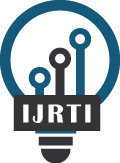|
International Journal for Research Trends and Innovation
International Peer Reviewed & Refereed Journals, Open Access Journal
ISSN Approved Journal No: 2456-3315 | Impact factor: 8.14 | ESTD Year: 2016
Scholarly open access journals, Peer-reviewed, and Refereed Journals, Impact factor 8.14 (Calculate by google scholar and Semantic Scholar | AI-Powered Research Tool) , Multidisciplinary, Monthly, Indexing in all major database & Metadata, Citation Generator, Digital Object Identifier(DOI)
|
Issue: November 2025
Volume 10 | Issue 11
Review Result and Publication of Paper within : 2-3 days
Click Here For more DetailsFor Authors
Forms / Download
Published Issue Details
Editorial Board
Other IMP Links
Facts & Figure
Impact Factor : 8.14
Issue per Year : 12
Volume Published : 10
Issue Published : 114
Article Submitted : 18499
Article Published : 7841
Total Authors : 20714
Total Reviewer : 756
Total Countries : 142
Indexing Partner
Licence
This work is licensed under a Creative Commons Attribution-NonCommercial 4.0 International License







|
Published Paper Details
|
|
| Paper Title: | Real Time Voice Cloning |
| Authors Name: | Dr. T.N. Anitha , Amilio Dsouza , Ashutosh , Akshay Gole |
| Download E-Certificate: | Download |
| Author Reg. ID: |
IJRTI_182363
|
| Published Paper Id: | IJRTI2206107 |
| Published In: | Volume 7 Issue 6, June-2022 |
| DOI: | |
| Abstract: | A latest study has advanced a three-level pipeline that lets in you to clone an unseen voice from just a few seconds of reference speech all through exercise and without retraining the template. The researchers percentage strikingly natural sounding findings. The plan is to copy this model and open source it to the public. With a new vocoder version, the aim is to adapt the framework to make it run in real time. The purpose is to expand a three degree deep getting to know the gadget so one can perform real-time voice cloning. The recent development of the Deep Study has shown amazing results in the localization of Speech to Text. For this reason, the deep neural community usually consists of a single speaker using a professionally recorded hours of audio corpus. Revoking this type of model is very costly as it requires accumulating a whole new dataset and retraining the version. This framework is the final result of Google's 2018 paper, and just a single public implementation exists before us. The system may want to capture a practical representation of the voice spoken in a virtual layout from a speech of just 5 seconds. Now that the text content has been dropped, you can use any voice extracted from this process to perform a text-to-speech. Looking forward for our own implementation or the Open-source implementation plans to duplicate each of the three stages of release. The plan is to implement a successful model of the corresponding pipeline with in-depth knowledge for the preprocessing of facts. The next step is to train these models of thousands of audio systems for weeks or months with large datasets of tens of hours of audio. Instead, observe their strengths and weaknesses. We are primarily aware that this system works in real time, that is, it allows us to capture and generate audio in a time that is much shorter than the length of the produced audio. The framework may be able to duplicate audio that you have never heard at any stage of training and generate audio from text content that you have never seen. |
| Keywords: | Neural Networking, Three-stage Pipeline, Deep-learning, Text-to-Speech |
| Cite Article: | "Real Time Voice Cloning", International Journal of Science & Engineering Development Research (www.ijrti.org), ISSN:2455-2631, Vol.7, Issue 6, page no.652 - 658, June-2022, Available :http://www.ijrti.org/papers/IJRTI2206107.pdf |
| Downloads: | 000205136 |
| ISSN: |
2456-3315 | IMPACT FACTOR: 8.14 Calculated By Google Scholar| ESTD YEAR: 2016 An International Scholarly Open Access Journal, Peer-Reviewed, Refereed Journal Impact Factor 8.14 Calculate by Google Scholar and Semantic Scholar | AI-Powered Research Tool, Multidisciplinary, Monthly, Multilanguage Journal Indexing in All Major Database & Metadata, Citation Generator |
| Publication Details: |
Published Paper ID: IJRTI2206107
Registration ID:182363
Published In: Volume 7 Issue 6, June-2022
DOI (Digital Object Identifier):
Page No: 652 - 658 Country: Bangalore, Karnataka, India Research Area: Engineering Publisher : IJ Publication Published Paper URL : https://www.ijrti.org/viewpaperforall?paper=IJRTI2206107 Published Paper PDF: https://www.ijrti.org/papers/IJRTI2206107 |
| Share Article: | |
|
Click Here to Download This Article |
|
| Article Preview | |
|
|
|
Major Indexing from www.ijrti.org
| Google Scholar | ResearcherID Thomson Reuters | Mendeley : reference manager | Academia.edu |
| arXiv.org : cornell university library | Research Gate | CiteSeerX | DOAJ : Directory of Open Access Journals |
| DRJI | Index Copernicus International | Scribd | DocStoc |
ISSN Details
 |
 |
ISSN: 2456-3315
Impact Factor: 8.14 and ISSN APPROVED,
Journal Starting Year (ESTD) : 2016
DOI (A digital object identifier)
 Providing A digital object identifier by DOI.ONE How to Get DOI? |
Conference
Open Access License Policy
Important Details
Join RMS/Earn 300
WhatsApp
Click Here
Click Here
Indexing Partner |
|||
| Copyright © 2025 - All Rights Reserved - IJRTI | |||






